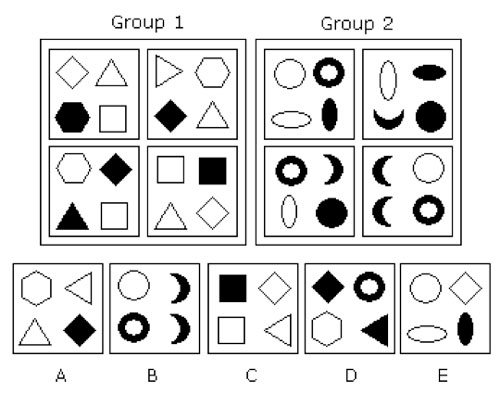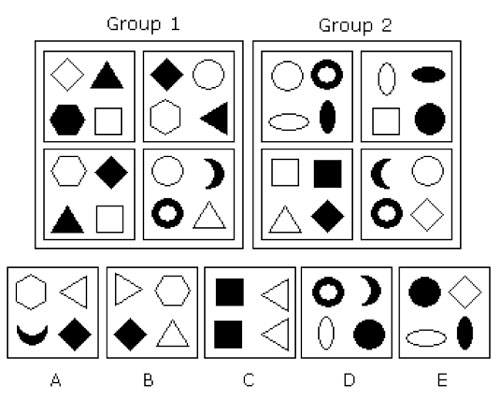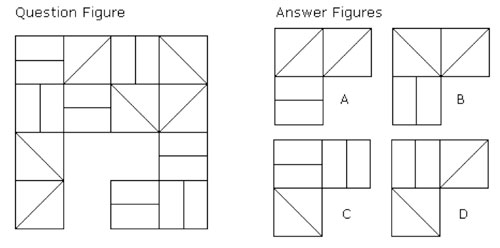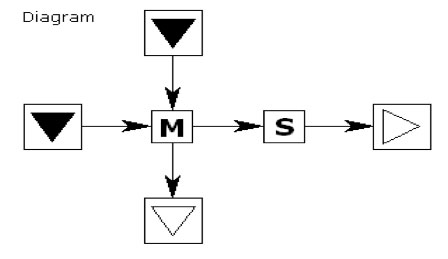Abstract Reasoning Tests
Abstract reasoning tests use diagrams, symbols, or shapes to assess how well you can establish logical relationships and can identify the underlying logic of a pattern so the solution can be identified.
 |
These tests are particularly suited to management selection because management roles involve:
• A high degree of problem solving
• Dealing with complex data or concepts
• Developing strategies or policies
• Performing non-routine tasks where initiative is required
The inclusion of abstract reasoning tests in management selection is also popular because it does not discriminate against candidates who do not have English as their first language.
Missing Symbols and Next in Sequence
Instead of using letters or numbers in a sequence, abstract reasoning questions use a variety of shapes, sizes, colors, and patterns. The following examples show you the variety of questions you are likely to answer during this 30-minute test. Typically it will consist of approximately 20 questions giving you just over a minute for each question.
1. Which symbol in the Answer Figure completes the sequence in the Problem Figure?
 |
Answer = C - The figure is rotated clockwise through 90 degrees each time.
2. Which of the Answer Figures belongs in neither group?
 |
Answer = D & E - Group 1 shapes are all straight lines, Group 2 shapes are all curved.
3. Which of the Answer Figures belongs in neither group?
 |
Answer = A, B & D - Same color shapes are diagonally opposite (Group1) or above/below (Group 2).
4. Which of the Answer Figures fits the missing space in the Question Figure?
 |
Answer = D - each row and column contains one line of each type.
Flowchart Comprehension and Diagrammatic Reasoning
The use of flowcharts is a standard management tool and an individual's ability to understand and infer rules from these charts is an essential skill. This is especially significant in organizations that are project based and utilize matrix management within their operations.
This type of abstract reasoning question gauges your ability to deduce the rules linked to a flowchart or diagram and then use them in a new situation. For example:
The functions 'M' and 'S' transform the input shapes in a certain way. You need to use the diagram to determine what effect each of these functions has. Apply them to the input shape in the question to arrive at the correct output.
 |
Answer = B - from the diagram you can infer that the function 'M' inverts color (black → white and white → black). Function 'S' rotates shapes counterclockwise through 90 degrees.
It is essential to practice these types of questions because your score will reflect your ability to handle abstract concepts and ideas. It also gives a potential employer a clear indication of your general intellectual ability and indicates how well you assimilate new information that is outside your previous experience.
You may also be interested in:
Management Aptitude Tests | Verbal Ability and Reasoning Tests | Numerical Ability and Reasoning Tests | Abstract Reasoning Tests | Spatial Ability Tests | Scoring and Ranking Results.


